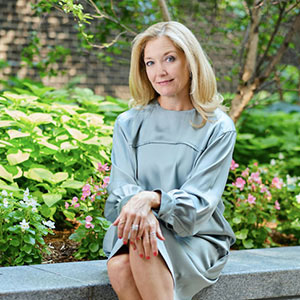
Have you heard? JCK magazine is celebrating its 150th anniversary this year.
And to honor that milestone, we’re talking to 150 veteran jewelry professionals in 2019—for a magazine feature series (that will also run online) meant to round up the voices of some of the industry’s most influential and successful professionals.
Because we can’t publish every interview in its entirety in print, we’ve been posting full interviews right here, on JCKonline.com, every Thursday.
Today we hear from Caryl Capeci, president of Hearts On Fire, about how the industry has changed over the years, and what JCK has meant to her.
JCK: How long have you been in the jewelry industry, and how has it changed since you joined?
Caryl Capeci: My first job after graduating Dickinson College was at NW Ayer—so you could say I actually fell into the jewelry industry. It was sheer luck that I was assigned to the De Beers account. Thirty years later, I am even more passionate about the category than I was then.
Back then it was about learning and discovering. Now I’m incredibly excited for the evolution and change that we see on the horizon. It will transform our businesses and the industry. And frankly, I find it invigorating.
When I think about those first few years, the greatest indication of the enormous change we’ve experienced [in recent years] is to think about all that did not exist at that time and how we’re working today.
As someone so immersed in the world of marketing and selling diamond jewelry, I never had to think about Blue Nile, Brilliant Earth, Amazon, or any other pure e-commerce player. I never had to worry about the impact on consumer behavior after potential buyers researched online and were misguided by inaccurate information.
Back then, consumers obtained all of their information at the counter from the trusted jeweler in their hometown, where most diamond jewelry business was done. In the eyes of the consumer, almost all diamond jewelry was non-branded. There was no such thing as a diamond jewelry brand like Hearts On Fire back then. I would say the diamond jewelry industry has changed dramatically in the past two decades.
What’s your experience with JCK magazine?
My experience in the early days was that of a media buyer. I negotiated and bought ads for the Diamond Promotion Service in the magazine. JCK was definitely a staple in that plan and was the foundation of all communication programs we designed for the trade.
Launching a new retailer program or announcing any big news would start with a call to JCK to discuss editorial coverage and advertising support. You could not communicate broadly or effectively to the industry without it.
What was your first impression of JCK magazine, and how has it changed over the years?
I have always considered JCK a must-read to understand what’s happening in our industry. In the early days it delivered critical news but, like all magazines with longer lead times, was challenged to appear timely.
When the first JCK Las Vegas jewelry show opened in 1992, the organization became more of a foundational element for our industry in the U.S. Now with its powerful online platform, it offers the most timely and accurate delivery of news and information. If anything significant happens in the business, you know that [JCK news director] Rob Bates will serve it up in your in-box in a matter of hours.
Top: Caryl Capeci (courtesy of Hearts On Fire)
Catch up on the JCK’s 150th interviews:
Eddie LeVian, CEO of Le Vian
Peggy Jo Donahue, freelance writer and former JCK editor-in-chief
Rebecca Moskal, jewelry marketing veteran
Follow JCK on Instagram: @jckmagazine
- Subscribe to the JCK News Daily
- Subscribe to the JCK Special Report
- Follow JCK on Instagram: @jckmagazine
- Follow JCK on X: @jckmagazine
- Follow JCK on Facebook: @jckmagazine